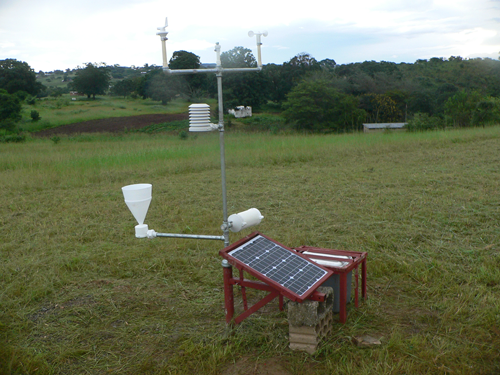- makeITcircular 2024 content launched – Part of Maker Faire Rome 2024Posted 2 weeks ago
- Application For Maker Faire Rome 2024: Deadline June 20thPosted 2 months ago
- Building a 3D Digital Clock with ArduinoPosted 7 months ago
- Creating a controller for Minecraft with realistic body movements using ArduinoPosted 7 months ago
- Snowflake with ArduinoPosted 8 months ago
- Holographic Christmas TreePosted 8 months ago
- Segstick: Build Your Own Self-Balancing Vehicle in Just 2 Days with ArduinoPosted 8 months ago
- ZSWatch: An Open-Source Smartwatch Project Based on the Zephyr Operating SystemPosted 9 months ago
- What is IoT and which devices to usePosted 9 months ago
- Maker Faire Rome Unveils Thrilling “Padel Smash Future” Pavilion for Sports EnthusiastsPosted 10 months ago
Forecasting the Rains Down in Africa: 3D Printed Weather Stations with Raspberry Pi

Do you ever think about what people did before sophisticated weather-predicting technology existed? In the US at least, we have a bit of a weather obsession – just take a look at the Weather Channel sometime, with its lineups of shows about natural disasters, potential natural disasters, historical natural disasters, and all manner of weather-related phenomena. I admit that I sometimes spend an excessive amount of time on weather websites – the technology is just too cool. There’s virtually nothing we can’t find out about what’s happening in our atmosphere at any given time.
The passion for weather forecasts is so strong in Italy as well: i’m sure this project will be liked by many people, not only as it is but as inspirational too!
In many developing countries, weather stations are scarce or outdated, often lacking the resources to update their equipment or replace broken parts, meaning that residents get very little warning as to impending natural disasters. As many of these areas are especially prone to flooding, the lack of forewarning can have devastating impact.
This project was born through collaboration between the National Oceanic and Atmospheric Administration (NOAA), the National Center for Atmospheric Research(NCAR), and the University Corporation for Atmospheric Research (UCAR). The goal: expand the number – and quality – of weather stations throughout developing countries by building them with inexpensive 3D printed parts that can be easily replaced if they wear out or malfunction.
A year later, the first stations are in place. Five weather stations, mostly 3D printed, have been installed across Zambia: three next to radio stations that will broadcast the weather data to surrounding communities; one near a hospital; and one near the headquarters of Zambia’s meteorological department. At this time, the stations are beginning to gather and transmit data on rainfall, temperature, wind and more.
The cost of building traditional weather stations has prohibited these networks from being expanded or improved thus far: the construction of a single station can cost anywhere from $10,000 to $20,000. In contrast, the 3D printed stations cost about $300 to build – plus repairs and replacements will cost next to nothing.
Source: 3DPrint.com














